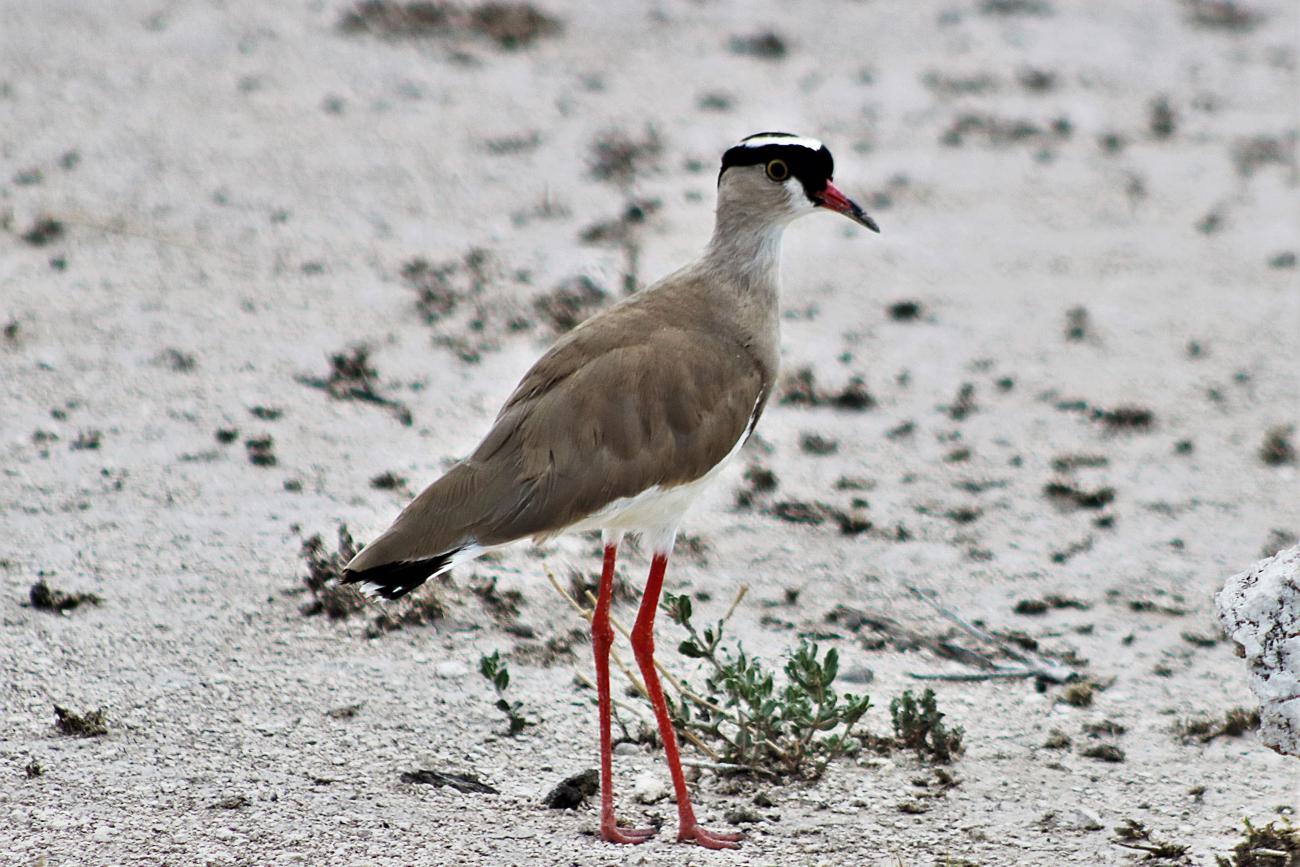Crowned Lapwing

Etosha National Park, Namibia
The crowned lapwing or crowned plover is a fairly large wader found occurs contiguously from the Red Sea coast of Somalia to southern and southwestern Africa.
prefer short, dry grassland which may be overgrazed or burnt, but avoid mountains. In higher-rainfall areas such as parts of Zambia and Zimbabwe, they occur mainly as dry-season visitors. In dry regions of northern Botswana, however, they are attracted in large numbers when good rainfall occurs. In southern Africa their highest concentrations are to be found in the dry central Kalahari region.
Feeding
Their diet consists of a variety of insects, but termites form an important component.
Breeding
Bare-part colours of males brighten in the breeding season. Different types of display flights lure the female to the defended territory. A female accepting the male and territory will follow the male during his display flight. Mates may be retained for life. Egg-laying is timed to precede the rainy season and most incubating is done by the female. The male assists only on hot days, when he either incubates or shades the nest.The nest is in a shallow depression in the soil with a lining of vegetation and other debris. The nests are on flat ground near a shade tree and mammal droppings that are the same color as the eggs. There are normally 3 eggs, sometimes 2 or 4. Incubation requires 28 to 32 days and is done by both sexes. Immediately after hatching the young leave the nest while both parents look after them.
Wildfile Specials
Their numbers have increased in the latter part of the 20th century after benefiting from a range of human activities. They live up to 20 years.
t is an adaptable and numerous species, with bold and noisy habits.
Because crowned plovers live in open grassland where there is no vegetation to conceal them, they have a highly-developed ability to detect potential predators. Often nesting occurs in close vicinity to other plovers. As soon as hatching occurs the adults change from being quiet and restrained to being exceedingly noisy and aggressive at the approach of a human.
The crowned plover opportunistically forages on a wide variety of insects, but mostly ants and termites. These insects are often extracted from the dung of large mammals. They feed
One curious feeding habit of all plovers, which has not fully been analyzed, has been called foot paddling or foot trembling. The plover stamps the ground with its foot. Worms mistake the noise for the pattering of rain and burrow up to the surface where they are eaten by the plover.